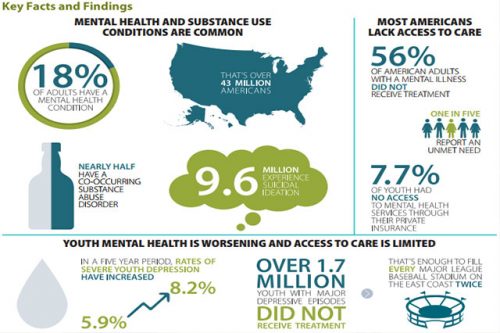
Source: pixabay.com
Just what is computerized therapy, and how is it an isolated topic compared to online mental health therapy? The typical therapy is done through face-to-face meetings of the patient and therapist. However, today, the therapist can do psychotherapy or any kind of mental health treatment through videoconferencing, emails, or chat through the Internet. This is more popularly known as e-therapy or online therapy. Likewise, now there are several self-help therapies from books, CDs, and DVDs that are converted and made available on the web.
Computerized therapy focuses on a distinct point. Internet-based interventions essentially make use of a computer, but ‘computerized therapy’ emphasizes on the computer’s passive function in conveying clinical or medical information. Thus, the computer delivers content and can perform its role with or without the Internet.
Understanding How It Works
This experiment will help us explain and clarify how computerized therapy works.
If you recall, there was a series of books that were very famous decades ago – Choose Your Adventure books. The reader gets to make decisions while following the story of the book, and his choices will ultimately tell how the story progresses. If we were to use a self-help book, and, say, we read something about getting over social anxiety. The book instructs you to turn to page 150 and find quizzes and activities that will help you deal with your anxiety. The guidelines and lessons capture clinical information and are utilized to deliver specific interventions. If you add more of these options and personal data to the book, it will come to the point that every reader will be going through a distinct route as he continues until the end. This simplified idea is appropriate and suitable to apply in software and a key principle behind computerized therapy. Therapies such as CBT can be implemented through this principle as well.
Creating better positive technologies represents a potential way to increase accessibility, affordability, and effectiveness of positive interventions. — Tchiki Davis, Ph.D.
Benefits Of Computerized Therapy
The idea explained above demonstrates a vital advantage of computerized therapy over the typical self-help treatments in its ability to spontaneously modify or maintain clinical information depending on the needs of the user. Other benefits include:
- Improved Data. This unique type of therapy is more than just content on a computer screen. Depending on what you implement, its programs can be filled with great videos, images, voiceovers, multimedia content, and digital exercises. A well-created treatment plan can be very captivating and helpful to the user.
- Progressive and Changing Content. With self-help books, the contents are just the way are from the day they were published. They’re constant and frozen. With digital computerized therapy programs, content can be altered or adjusted any time for the user’s satisfaction. The system ensures that the user is delivered with the most current treatment strategies.

Source: aimformentalhealth.org
- Unlimited Reach. This is where computerized therapy and traditional only therapy are both winners – their clients are unlimited, and what’s more, they can be handled simultaneously. Do you doubt that? If you do, then check out your Facebook and just look at the number of users. There are billions. That’s how much reach digital therapy can have!
The human component is essential to psychological growth and progress, especially the interaction and communication that facilitate that growth. But apps are allowing therapists more insight into the lives of patients in between sessions. — John Smith Ph.D.
Face-To-Face Versus Computerized Therapy
The big question is: Can computerized therapy be as effective and as beneficial as traditional face-to-face therapy? This statement is certainly debatable. However, one thing is sure: computers are not yet replacing human beings, at least not shortly.
While that question is up for further deliberation, let us just agree on this one: there are important reasons why it is necessary to explore new ways to spread information regarding treatments and other clinical content, and one of the most crucial reasons is to increase audience and user reach. There are hundreds, if not thousands, of people all over the world who suffer from a mental health condition for which treatment is possible. It is only that most of these people do not have the accessibility for therapy face-to-face. Why? Because of these:
- Even in Europe or other wealthy countries, there are a lot of people who do not have the money for therapy. Although some countries have mental health services included in their insurance programs or their government’s healthcare system, the list is lengthy with only a limited number of sessions allowed for each patient.
- In emerging countries, on the other hand, going to a therapist is considered a luxury that is close to impossible to happen for most of the population.

Source: needpix.com
- Due to the existing stigma around mental illness, there are still a lot of persons who are resistant to visiting a therapist despite the fact that therapy is accessible to them. However, they are more than willing to try computerized therapy primarily because they do not have to show their face at the clinic, and they remain anonymous throughout the whole session. Today’s technology allows us to be invisible yet able to seek therapy and improve our life.
It is important to note that the goal of this work isn’t to replace counsellors, but rather to reduce their load. — Fjola Helgadottir Ph.D.
Conclusion
Although computerized therapy is a young and budding technology, it is quickly progressing and has changed the lives of people significantly. There are, of course, existing challenges and barriers, but undoubtedly, these automation systems are now and will continue to play a vital role in therapy’s future.